The town of Atotonilco, just 20 minutes outside of San Miguel de Allende is mostly known for its church complex, declared UNESCO World Heritage. Called the “Sistine Chapel of Mexico” due to the mural work that adorns it, Sanctuary of Atotonilco is probably the best half-day trip you can make from San Miguel. Since it lies on the main road to Dolores Hidalgo, you can see both sites on the same day, tracing the Mexican independence movement and its religious underpinnings.
If arriving by bus heading to Dolores Hidalgo, you’ll be left at the start of the road leading to the sanctuary. You can either walk 20 minutes by foot or hail a passing taxi.

Atotonilco is a small, rural community of just 600 people, lying in a dry, desert grassland, studded with nopal cacti.
The name “Atotonilco” comes from a Nahuatl phrase “in hot water” which refers to the many thermal springs found in the area.
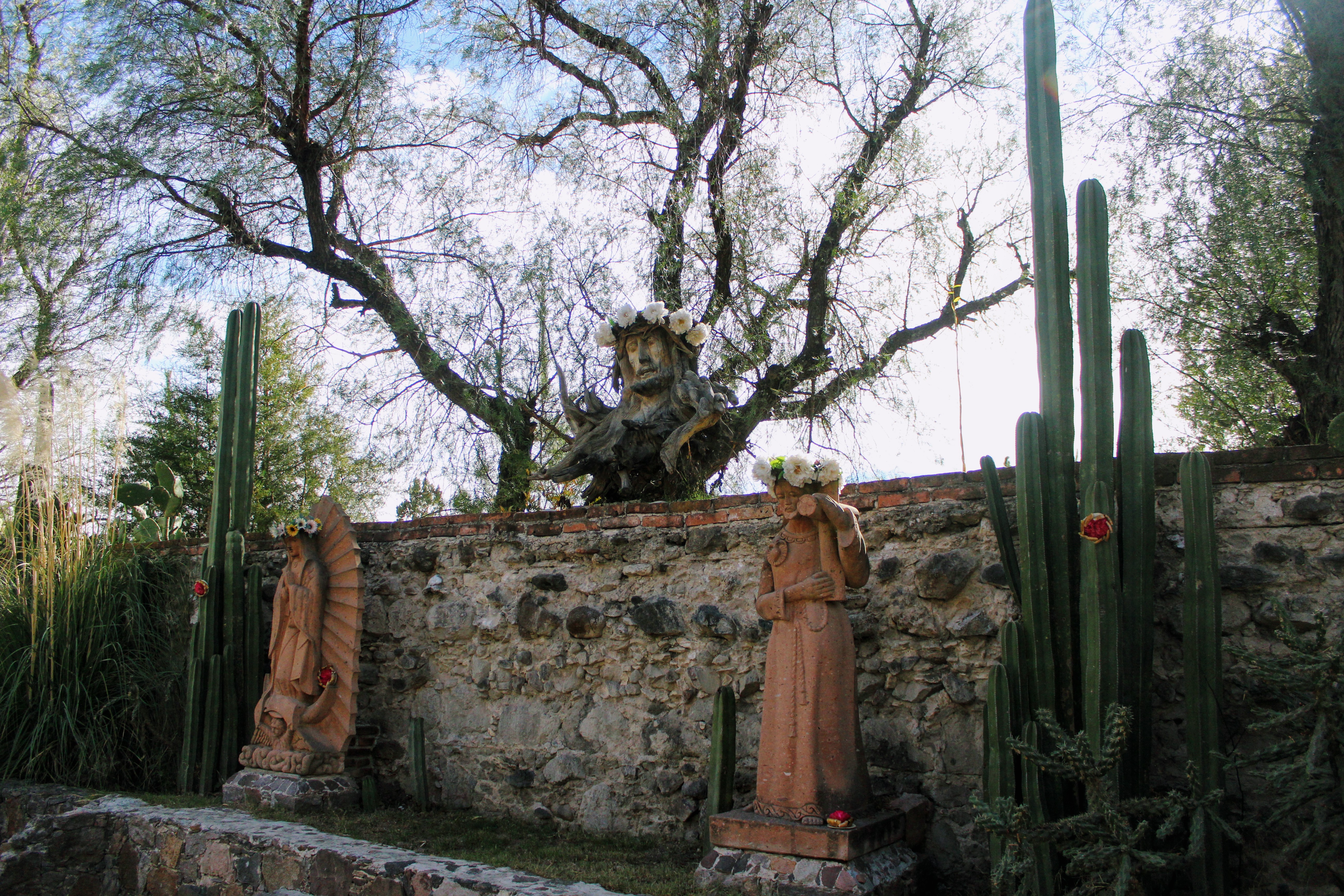
The complex was built in the 18th century by Father Luis Felipe Neri de Alfaro, who, according to tradition, was called upon by a vision of Jesus with a crown of thorns on his head and carrying a cross.
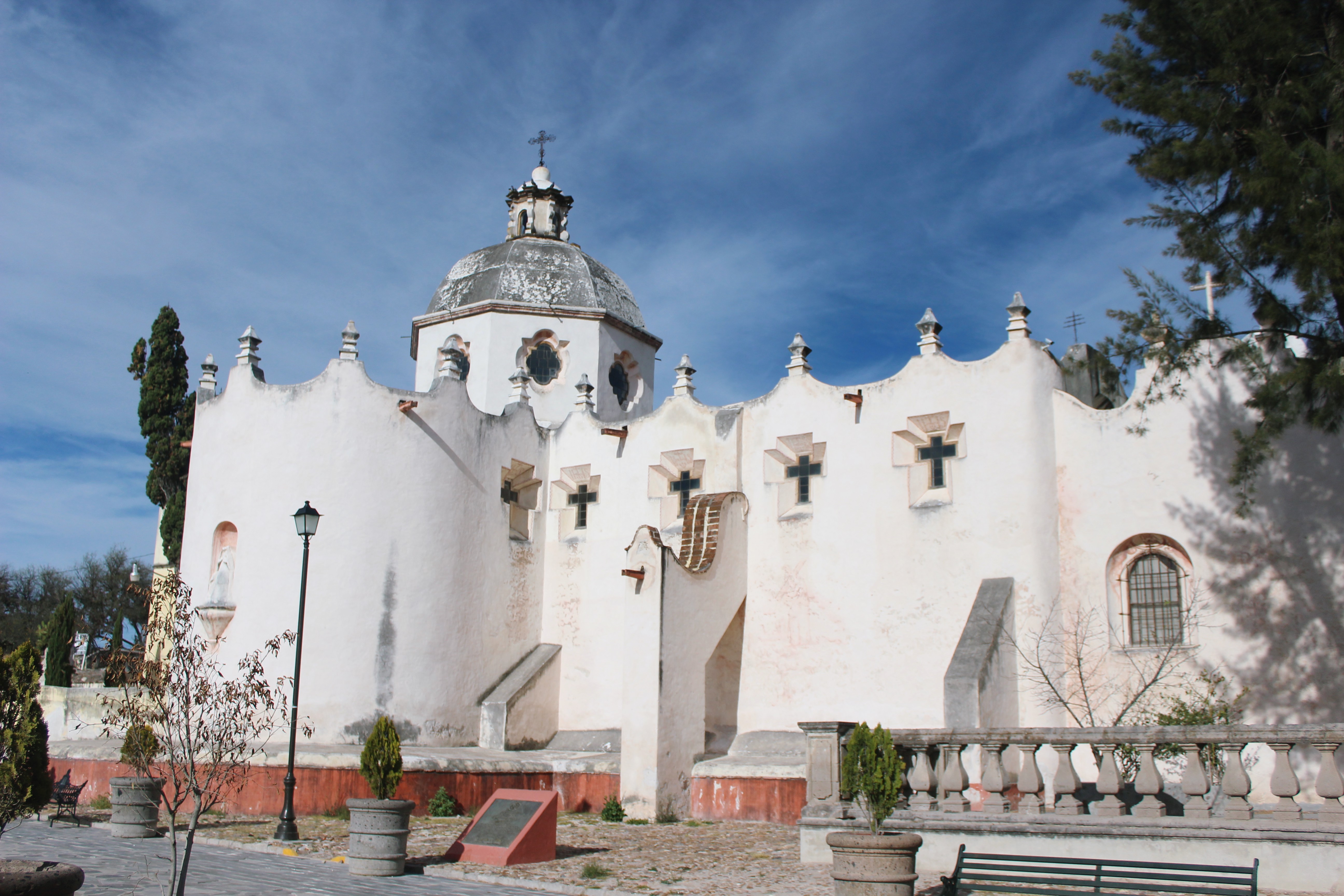
In front of the sanctuary stands a figure of Miguel Hidalgo, the Mexican hero of independence, whom I written about in our visit to Dolores Hidalgo. The image of Virgin of Guadalupe, used by his insurgent army as a banner, was taken from the sanctuary in 1810.
The walls and ceilings of the interior are nearly entirely covered in mural work, sculpture, inscriptions and oil paintings.

Most of the mural work was done by Antonio Martínez de Pocasangre over a period of thirty years with almost no free space left between the many images.
The idea behind the project was to present the biblical stories in a graphical way, to make them accessible to the illiterate indigenous people.
The style of the painting imitates Flemish painting which was known through Belgian prints that the Spanish brought over from Europe.
The ceiling tells the story of Jesus’s life and death according to the Gospels.
Without close acquaintance with the New Testament, the stories depicted on the ceiling are often hard to decipher. But nevertheless, the meticulous work and depiction of thousands of small details leaves a strong impression.
A Virgin of Guadalupe banner on the left is a replica of one used by the Miguel Hidalgo army.
After visiting the main church, return back to the entrance and go at the left door. After paying a small fee, you’ll enter the Chapel of the Holy Burial.
Built after the main church, the chapel imagery centers on the death, burial, and resurrection of Jesus.
Outside of the church, the most popular item of memorabilia sold by vendors are bells. A reminder of the Cry of Dolores, that morning on which Miguel Hidalgo rang the church bell, which marked symbolic beginning of the Mexican independence movement.
As we were making our way back to the main road, I took a last look at the sanctuary. To a secular person like me, faith, like the one driving this astonishing work of religious art is a mystery, almost as big as the myth nurturing it.
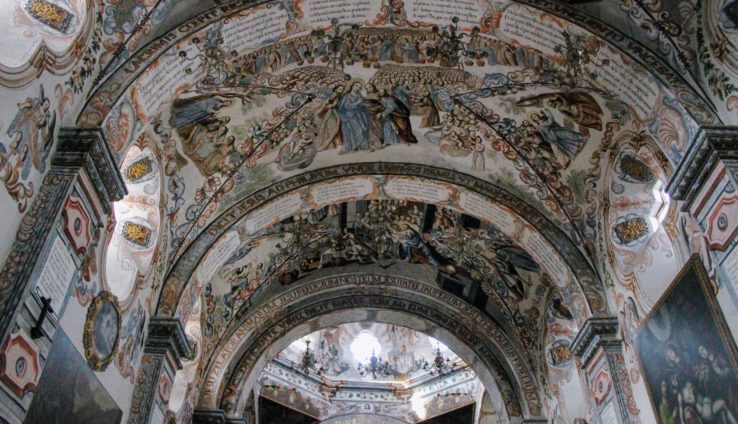
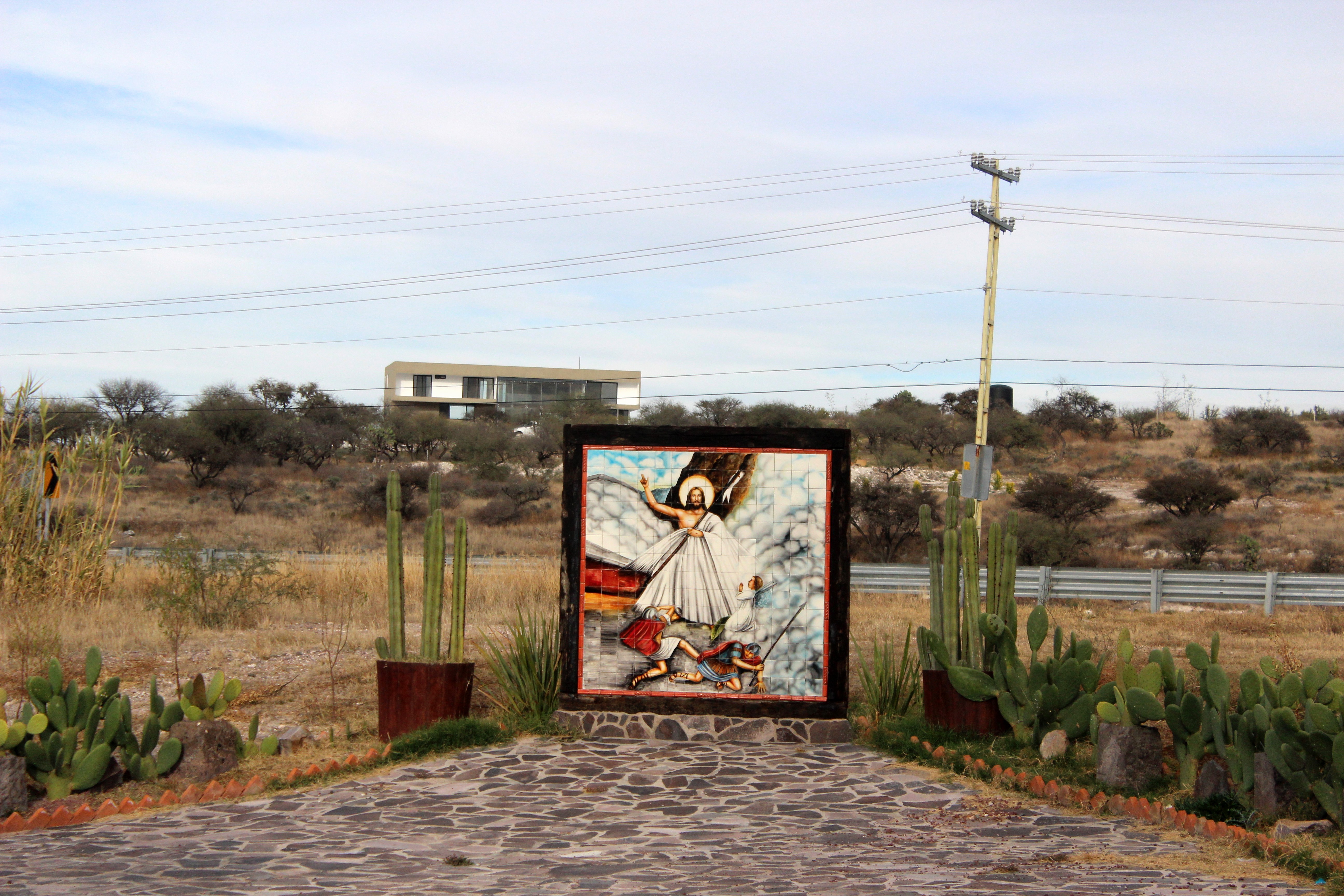



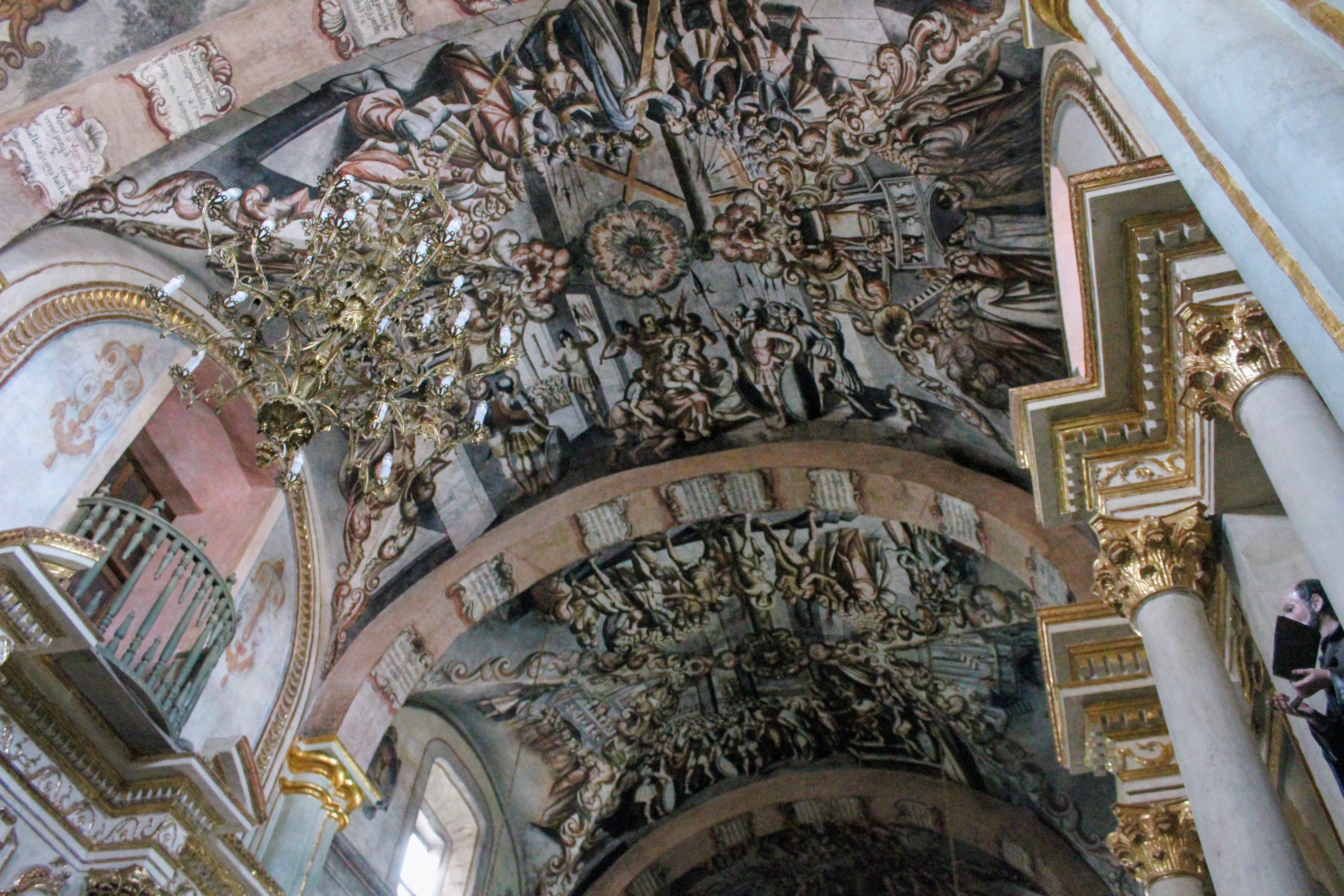





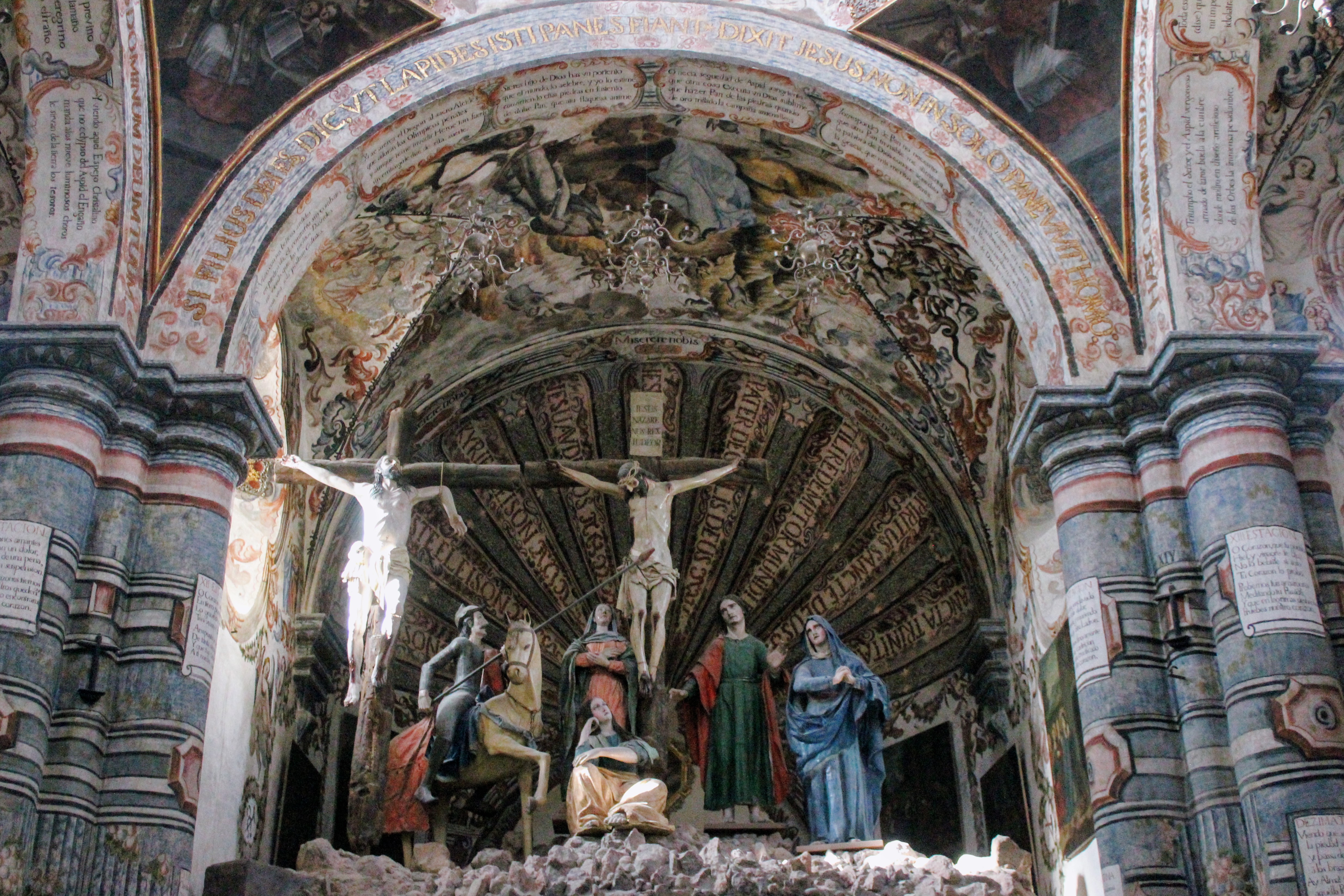






Maybe if Padre Hidalgo had not seized that banner of the Virgen de Guadualupe from the Sanctuario and waved it before his ragtag mob of laborers, urging them to resist the tyrannies of the Spanish army, the Virgen would have been your ordinary patron saint. But like Joan of Arc the Virgen took on a whole complex of political meanings to add to the social and religious implications of the original story.
It’s clear the Pocasangre was obsessed with the crucifixion and not so much with the other parts of Jesus’ life.
Hi Tom,
Did the Virgin of Guadalupe play any symbolic role after the independence?
We were here but we didn’t go inside! Very interesting. Thanks for sharing 🙂
Just as the United States has had its civic religion, usually expressed by the president at the ends of speeches, the Virgen in a society divided between indigenous and criollo, between the religions of the Americas and the religion of Europe, between humble and rich has come to promote unity and justice, secular ideals garbed in a religious story and with cultural norms and rewards. In Oaxaca on 12 of December at the Church of the Virgen of Guadalupe, people stood in line for hours to present their infant/toddler sons dressed like Juan Diego. They were responding to a religious belief, yes, but there was also a direct social component.
Thanks Tom for this fascinating introduction into the political symbolism of the Virgin.
I respect your right to whatever religious belief you have, or no belief at all, but I disagree with your implication that faith is based on a myth. Jesus existed historically and various Jewish, Roman and Greek historians contemporary to Jesus all affirm rather than refute this man from Galilee. My acceptance of Christ as savior and Lord is profoundly real and not based on any myth. Thank you.
Hi George,
I don’t dispute Jesus being is a historical figure. But whether or not he is a savior and Lord is matter of faith.